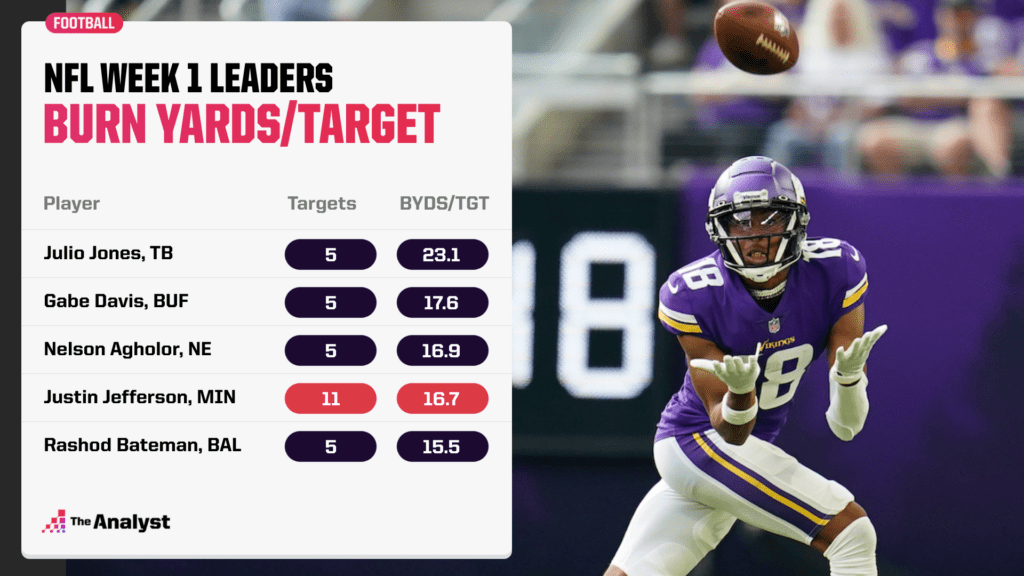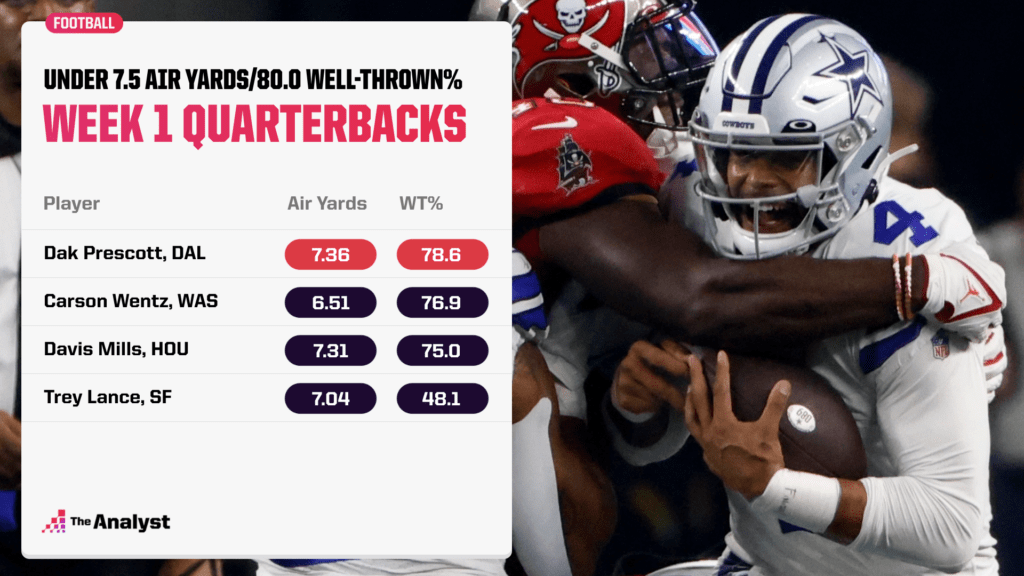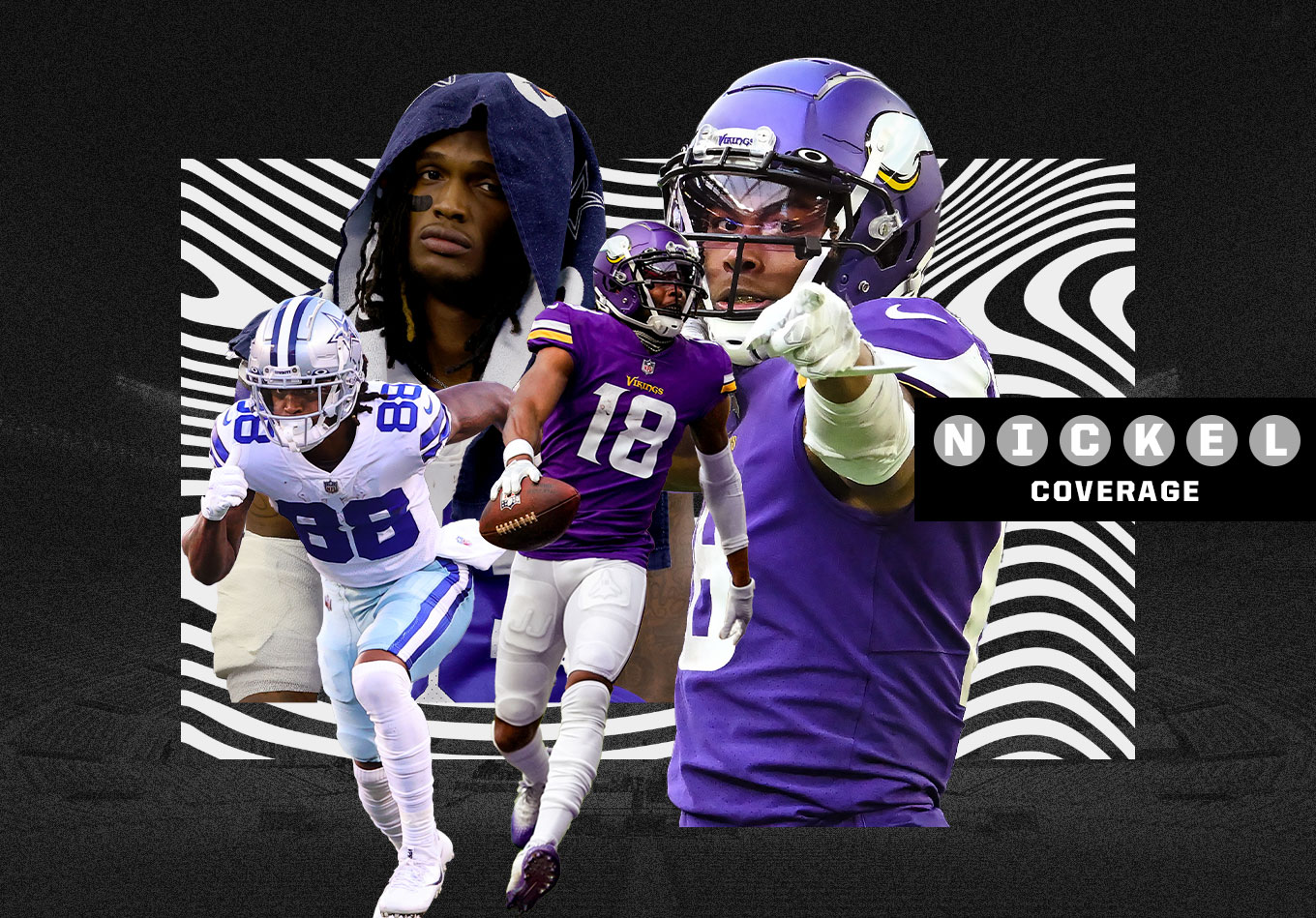The 2020 NFL Draft class was largely defined by the quality and the depth of the wide receivers available, and the two crown jewels to this point have been Justin Jefferson and CeeDee Lamb.
Both headed into this season as the obvious focal points of offenses hoping to provide the platform for postseason runs for two teams that were both reduced to the role of spectators by the divisional round last season.
However, just one week into the 2022 campaign, Jefferson and Lamb appear destined for vastly different seasons.
‘It was only Week 1’ serves as one of the most important caveats in the NFL. Poor results in the opening week of the season are often of no consequence to a team’s fortunes come the end of the regular season.
Yet, between the performance of the Minnesota Vikings in their win over the Green Bay Packers, and the Dallas Cowboys’ debacle in a primetime defeat to the Tampa Bay Buccaneers, it is tough to think of two displays from the opening week that revealed more about the respective directions of the teams in question.
Jefferson and Lamb are primed to play critical roles in what could be two of the headline stories of the 2022 season, but they are set to be tales of significant contrast.
A Perfect Marriage
Aaron Rodgers labeled Jefferson “the best player in the game today” after his masterclass in the Vikings’ 23-7 victory over the Packers.
It’s unclear whether Rodgers was referring to their Week 1 encounter or declaring the wideout the top player in the NFL, but Jefferson may have a compelling case for the latter should he continue to perform at the level he produced on Sunday.
Weaponized by an excellent game plan from new head coach Kevin O’Connell, Jefferson recorded nine receptions for a career-high 184 yards and two touchdowns.
Jefferson now has 205 receptions in 34 career games, becoming the fourth-fastest player to 200 catches. He tied Anquan Boldin and Reggie Bush (34) and is behind only Jarvis Landry (33), Michael Thomas (32) and Odell Beckham Jr. (30) on that list.
It was his fifth career game with at least 150 receiving yards and a touchdown reception, putting him tied with Randy Moss and Victor Cruz for the second-most games with those numbers by a player in his first three NFL seasons. Only Lance Allworth (six) has more.
Betting against Jefferson catching Allworth would seem a foolish move on the evidence of Week 1. His burn rate, which measures how often a receiver wins his matchup on a play where he is targeted, of 63.6% was far from the best of the opening week, yet no player did more when they did beat coverage.
Indeed, Jefferson’s burn yards per target average of 16.7 was fourth among receivers with at least five targets, illustrating the remarkable amount of separation he was able to create against Green Bay. None of the players above him (Julio Jones, Gabe Davis and Nelson Agholor) reached three figures in receiving yards.

Jahan Dotson (64.7) and Ashton Dulin (60.0) were the only receivers to end Sunday with a higher big-play rate – a measure of burns of over 20 yards and burns for a touchdown – than Jefferson’s 55.5%. The difference being that Jefferson’s hugely impressive performance in that metric came across 11 targets, while Dotson and Dulin had 11 combined.
Jefferson’s showing was the product of a marriage between a player who has quickly catapulted himself to the gold standard at his position and a play-caller who knows exactly how to use him.
Once mistakenly seen as purely a slot receiver, Jefferson was deployed all over the field by O’Connell. Jefferson lined up in the backfield, in the slot, on the outside and was sent in motion. His array of different alignments kept him away from Green Bay top cornerback Jaire Alexander and allowed the former LSU star to wreak havoc.
The versatile skill set of a true do-it-all receiver was harnessed to perfection and, in a week dominated by overreactions, it would not be a stretch to suggest the Vikings could be a force in the postseason and Jefferson an MVP candidate like Cooper Kupp a year ago if O’Connell and Minnesota continue in this vein.
Hours after Jefferson’s talents were maximized, Lamb saw his considerable skills wasted on a depressing night for Dallas.
Predictably Poor
With the Cowboys having shorn themselves of wide receivers behind Lamb, at least until Michael Gallup returns from injury, there was always a danger they would become predictable in the passing game and, through no fault of their star wideout, Dallas’ offense was unsurprisingly turgid in a 19-3 loss to the Buccaneers.
An offense deprived of the services of left tackle Tyron Smith struggled to contain the Tampa Bay defensive front, with Prescott’s snap to release time of 2.50 seconds – slightly quicker than the average of 2.55 for Week 1 – more a result of the pressure he was under rather than efficient processing from one of the game’s most intelligent quarterbacks.
Dallas averaged just 3.8 yards per play, with their lack of efficiency not reflective of Lamb’s individual efforts. Like Jefferson, Lamb was targeted 11 times, but he finished with just two catches for 29 yards.
His burn rate of 63.6 was also identical to that of his fellow 2020 draftee and, though Lamb did not generate the same level of separation, his average of 12.0 burn yards per target was well above the Week 1 average of 10.8.
But Lamb’s reasonable success in getting open was rendered completely immaterial as Prescott struggled behind a line ill-prepared for the challenge in front of them.
Prescott finished with 7.36 air yards per attempt, below the average of 7.75 for the week. Throwing short is not always an indicator of a poor performance – Josh Allen averaged 7.26 air yards in Thursday’s opener.
However, 96.8% of Allen’s passes were well thrown compared to 78.6 for Prescott, who threw three pickable passes on 28 attempts compared to one on 31 throws for Allen.

Hurried and inaccurate, Prescott was never allowed to be the quarterback he is when at his best – one capable of forming a devastating connection with Lamb, who amassed 2,037 receiving yards over his first two seasons in the NFL.
And, when Prescott was then forced to leave the game with a thumb injury that will keep him out six-to-eight weeks, Lamb’s hopes of joining Jefferson in the NFL’s elite at receiver this season went with him.
The Cowboys will now turn to backup Cooper Rush and most will expect Dallas’ Super Bowl hopes to quickly dwindle. Given the downgrade at quarterback, Lamb seems likely to consistently cut a bereft figure in what many thought would be a breakout campaign for the Cowboys’ WR1.
These two marquee matchups helped produce a story of two disparate teams. One in Minnesota, underrated and blessed with a coach schooled in the league’s preeminent offense who can put Jefferson in position to further his status as one of the most dangerous weapons in the game. The other, the Cowboys, overhyped and short of the talent or the diversity of thought to get the ball to their extremely gifted wideout.
Week 1 provided plenty of hope that 2022 can be the year the Vikings earn the on-field success to match Jefferson’s consistent brilliance, but it appears destined to be a season of frustration for Lamb and a thoroughly uninspiring Cowboys team.
Enjoy this? Subscribe to our newsletter to receive five stories each Friday. It’s free
